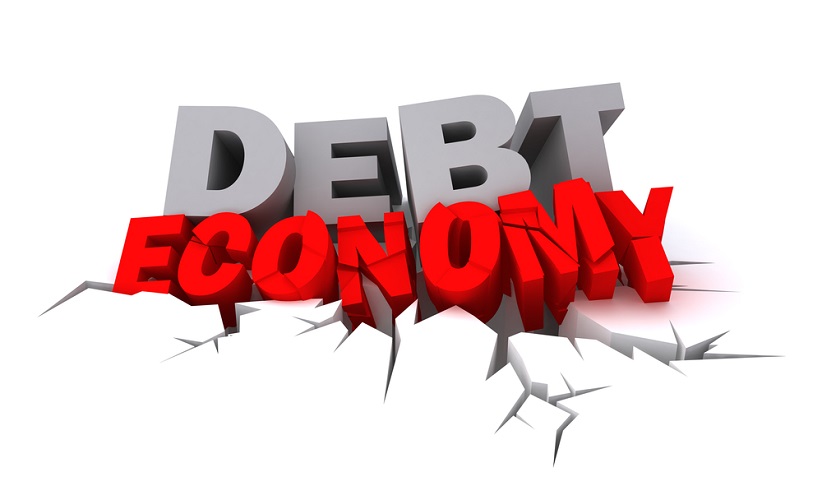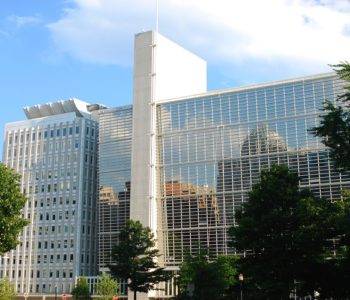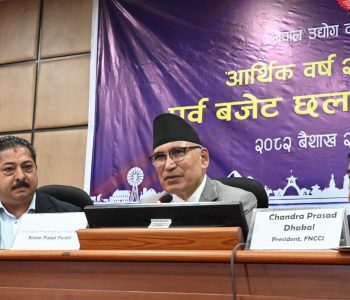Nepal’s public debt surges to Rs 26.67 trillion in Q3 of FY 2024-25

KATHMANDU: The Government of Nepal has amassed a staggering NPR 366.09 billion in public debt over the first nine months (July 2024–March 2025) of the current fiscal year, according to the Public Debt Management Office (PDMO). Of this, NPR 291.14 billion (79.53%) constitutes domestic borrowing, while NPR 74.95 billion (20.47%) is external debt, highlighting a heavy reliance on internal sources.
The PDMO’s March report reveals that while domestic debt collection has been robust, external borrowing has significantly underperformed, largely due to delays in project implementation by agencies like the Nepal Electricity Authority and the Civil Aviation Authority of Nepal. “If projects are completed as per agreements, external debt inflows increase; otherwise, we fall short of targets,” said Gopikrishna Koirala, head of PDMO.
Debt Repayment and Outstanding Liabilities
Over the same period, the government disbursed NPR 203.02 billion toward principal and interest payments, with NPR 170.09 billion (83.78%) allocated to domestic debt and NPR 32.93 billion (16.22%) to external debt.
As of March 2025, Nepal’s outstanding public debt stands at NPR 26.67 trillion, comprising NPR 13.01 trillion in domestic debt and NPR 13.65 trillion in external debt. This marks an increase of NPR 233.17 billion in public debt over nine months, driven partly by a NPR 70.09 billion rise in liabilities due to exchange rate fluctuations.
The outstanding debt equates to 46.75% of Nepal’s GDP, with domestic debt accounting for 22.82% and external debt 23.93% of GDP. Economists warn that the rising debt burden, coupled with a growing gap between capital expenditure and financial management allocations, could strain the government’s future investment capacity and risk fiscal imbalances.
Per Capita Debt Burden
With Nepal’s population at approximately 29.16 million (per the 2021 census), the per capita public debt has risen to NPR 90,000 by March 2025, up from NPR 83,000 in July 2024. This underscores the increasing financial load on citizens.
Annual Targets and Shortfalls
The government aimed to raise NPR 547 billion in public debt this fiscal year, of which 67.93% (NPR 366.09 billion) has been achieved by March. Domestic borrowing reached 88.22% of its target, while external borrowing lagged at 34.54%. To meet the annual goal, the government must secure an additional NPR 180.90 billion in the remaining three months, including NPR 38.86 billion domestically and NPR 142.04 billion externally.
Debt Servicing Costs
The government allocated NPR 402.85 billion for debt servicing this fiscal year, with NPR 252.48 billion (62.67%) spent by March, equivalent to 4.43% of GDP. Koirala emphasized that debt sustainability depends on its use: “If loans are invested in productive sectors, rising debt isn’t a concern. However, we only manage debt collection, not expenditure details.”
Exchange Rate Impact
Currency depreciation, particularly against the US dollar and SDR, increased Nepal’s debt liability by NPR 70.09 billion. The Nepali rupee depreciated by 4.22% against the dollar between July 2024 and February 2025, with the exchange rate rising from NPR 133.36 to NPR 139.24 per USD.
Economic Concerns
Economists caution that Nepal’s escalating debt, which has outpaced capital expenditure since FY 2023/24, could jeopardize long-term fiscal health. While external loans are typically tied to capital projects, domestic loans are sometimes diverted to recurrent expenses, raising concerns about efficiency. Koirala noted, “Theoretically, domestic loans should fund capital projects, but the government occasionally uses them for operational needs.”
As Nepal navigates its fiscal challenges, prudent debt management and timely project execution will be critical to balancing growth and financial stability.













Facebook Comment